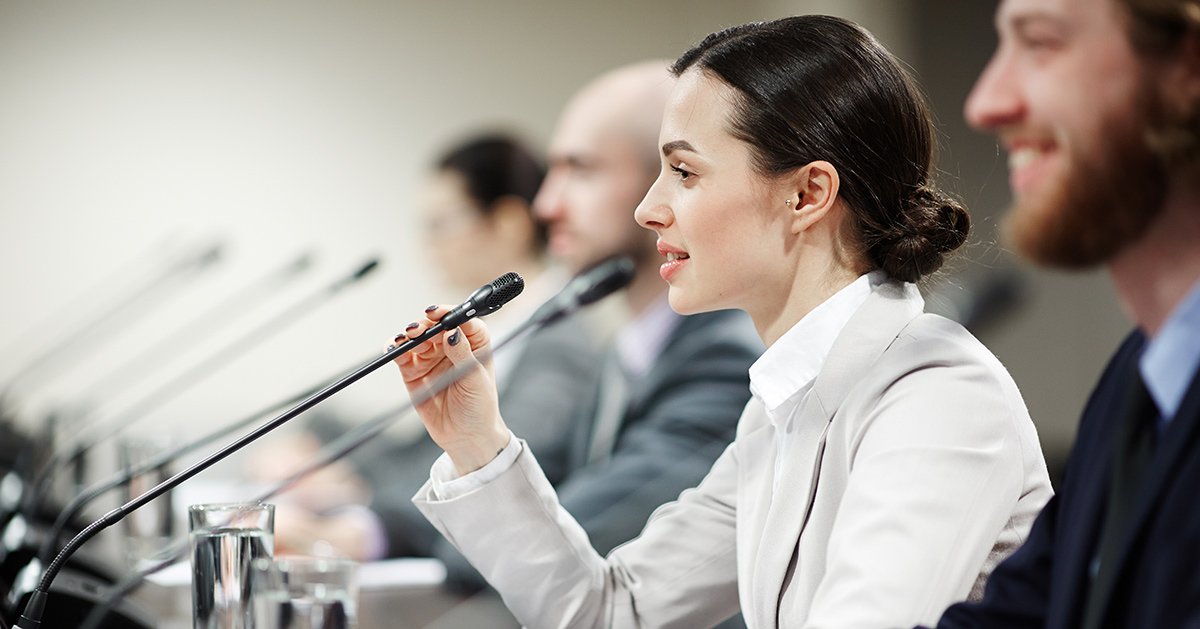Education and Public Policy emerge as essential threads in the complex tapestry of societal advancement that will shape the destiny of a country. The meeting point of these two domains defines not only the academic terrain but also the future of society as a whole. The compass of education, which is the foundation of personal development, is set by public policy.
On the other hand, public policy, which reflects society values, is greatly impacted by the standard and accessibility of education offered. This mutually beneficial partnership serves as the furnace in which knowledgeable citizens are developed and a country’s course is determined.
A narrative of empowerment or stagnation, innovation or inertia, is revealed by examining the interaction between Education and Public Policy. This investigation explores the complex tactics and structural frameworks that traverse the educational process in the larger framework of public governance. The dynamic dance between Education and Public Policy reveals itself as we begin our inquiry, with enormous ramifications for a society’s overall prosperity.

Creating the Social Progress Blueprint
With a significant impact on a country’s future, Education and Public Policy are the cornerstones of social progress. This article examines the complex interactions between these two domains, looking at how they have worked together to shape educational institutions, address concerns of inclusivity and equity, and overcome obstacles to coordinating aims with more general public policy objectives.
We also examine how funding and resource allocation for educational institutions are affected by changes in public policy, as well as methods to improve effectiveness through coordinated participation, all through the lens of collaboration.
Changing Educational Systems: The Impact of Law
Any strong educational system must have the guiding hand of public policy at its heart. The direction, content, and structure of education are all determined by these policies, which act as the architects. Policies at the national, regional, and local levels combine to create a fabric that represents the goals, values, and priorities of a community.
For instance, governmental policies in Finland, a nation well-known for its model education system, place a high value on a holistic approach to education, placing a strong emphasis on encouraging creativity and minimizing standardized testing. High-ranking educational outcomes have been routinely produced by this policy-driven strategy.
Read Also: Student Learning and Development
Symbiotic Relationship Between Education and Public Policy
The fields of Education and Public Policy are mutually reinforcing, with each providing information and insights into the other. The broad vision is provided by policies, which also set curriculum requirements, evaluation procedures, and learning goals. In addition, because education is dynamic, policies must be continuously adjusted to meet changing societal demands.
Example: Singapore’s flexible public policy framework has allowed it to successfully turn its education system into a global powerhouse. The nation’s officials have continuously updated their approaches to incorporate technology innovations and develop a workforce prepared for the future.
Inclusion and Equity: Critical Needs for Educational Policy
In order to alleviate socioeconomic inequalities and guarantee that educational opportunities are available to everyone, education policies are essential. A comprehensive approach to policy interventions that actively dismantle systemic barriers, surpassing mere rhetoric, is necessary to fulfill the commitment to fairness and inclusivity.
As an illustration, consider Brazil’s Bolsa Família program, which mixes social and educational programs to offer families financial assistance in exchange for their children attending school. This multimodal strategy fosters inclusivity by addressing poverty and promoting education at the same time.
Difficulties in Matching Academic Objectives
Aligning educational aims with more general public policy goals is a complex and difficult process. Because of the way society is always changing, policies need to be flexible, forward-thinking, and able to endure shifts in political leadership.
For instance, the No Child Left Behind Act in the US encountered difficulties during its implementation despite its goal of improving educational outcomes. Unintended effects emerged from the policy’s emphasis on standardized testing, underscoring the careful balance needed to match objectives with regulations.
Read Also: Scholarship Application Deadlines 2024
Financial Dynamics: The Effect of Policy on Allocation of Funds and Resources
Public policies have a significant impact on how educational institutions are financed. Strategies for allocating resources, financial priorities, and funding are all influenced by policies developed at different levels of governance.
As an illustration, consider the Nordic nations of Denmark and Sweden, which devote a large percentage of their budgets to education. Well-funded schools, well qualified instructors, and an overall high grade of education are the outcomes of these programs.
Techniques for Successful Collaboration
For initiatives in Education and Public Policy to be successful, effective cooperation between educators, policymakers, and stakeholders is essential. Clear lines of communication, pooled knowledge, and cooperative platforms foster a synergy that amplifies the practical application of policy.
As an illustration, the educational system in Japan is based on tight cooperation between legislators and educators via advisory committees. This cooperative endeavor guarantees that policies are shaped by educators’ real-world experiences, encouraging a sense of dedication and responsibility.
Getting Around in the Future: How Education and Public Policy Have Changed
Education and Public Policy will continue to work together in the future. The emergence of technology, evolving labor market conditions, and worldwide issues demand an anticipatory and flexible approach to policymaking.
As an illustration, South Korea’s educational system is always changing to accommodate the digital era. Future-focused policies are important, as demonstrated by their focus on upskilling teachers, incorporating technology into the classroom, and encouraging an innovative culture.
An Interwoven Tapestry
A tapestry that captures the essence of societal progress is formed by the delicate weaving of Education and Public Policy. These two domains interact dynamically to form educational institutions, address concerns of equality and inclusivity, and negotiate difficulties in coordinating aims with more general public policy objectives.
The cooperative efforts of educators, legislators, and other stakeholders become the loom that this tapestry is continuously woven upon as time goes on, guaranteeing that the fabric of education is robust, inclusive, and sensitive to the demands of a society that is always changing. The story of a better, more just future is still being written by Education and Public Policy, who are indispensable partners on the path to development.
Read Also: International Student Success Stories
What effects do public policies have on the design and curriculum of educational institutions?
The entire foundation of educational systems is shaped by collaboration between Education and Public Policy. The concepts that direct the creation, application, and assessment of educational institutions are found in public policies. These regulations define the parameters, define the curriculum, and set criteria for educational establishments.
The goal of addressing society needs and ambitions is at the core of this influence. To strengthen a country’s technological capability, a policy might, for example, place a premium on STEM education, while it might give the arts and humanities top priority to promote a society rich in culture. Education and Public Policy are iterative, thus educational systems adapt to the changing needs of the society they serve.
What influence does government action have on the formulation of various levels of education policy?
In the symbiotic relationship between Education and Public Policy, government action serves as the pivot. Macro-level: National governments pass broad laws that establish regional standards for education. The legal and regulatory framework is established by these policies, which have an impact on everything from teacher certification to curricular standards.
Local and regional governments are vital in customizing policies to meet particular requirements and demography at the same time. For example, in order to serve its varied population, a state may adopt bilingual education regulations. Customization is made possible by the system’s inherent flexibility, which guarantees that instruction reflects the distinctive qualities of each community.
In order to promote productive learning settings, Education and Public Policy work together to develop a coherent educational narrative that balances localized quirks with national norms.
In what ways might educational policies tackle the problems of inclusion and equality in the public school system?
To break down barriers and create an inclusive educational environment, Education and Public Policy have a huge duty. In order to guarantee that educational opportunities are available to everyone, regardless of socioeconomic background, race, or aptitude, equity and inclusion are crucial factors to take into account while formulating policies.
Financial assistance provisions, special education initiatives, and programs aimed at underprivileged populations are examples of policies that support equitable access to high-quality education. In addition, measures designed to provide a supportive learning environment for all kids must include inclusive teaching methods and a diverse curriculum.
In order to build a learning environment where everyone, regardless of background, may succeed, Education and Public Policy work together to address systematic injustices.

What are the main obstacles to coordinating educational aims with more general public policy goals?
When attempting to integrate educational aims with more general public policy goals, the complex tango between Education and Public Policy runs into some difficulties. Navigating the constantly changing terrain of societal needs is one of the main challenges. The objectives of education must change as global dynamics and technology progress in order to adequately prepare people for an unpredictable future.
The possible contradiction between short-term political aims and the long-term nature of educational goals is another obstacle. A careful balance is needed to maintain consistency in the face of shifting governmental agendas and administrations, highlighting the necessity of bipartisan commitment to ongoing educational growth.
To surmount these obstacles and guarantee the perpetuation of goals that are in harmony, Education and Public Policy should have constant communication, encouraging flexibility and strategic vision.
What effects do alterations in public policy have on how educational institutions are funded and allocated resources?
When it comes to allocating financial resources to educational institutions, Education and Public Policy have tremendous effect. Budgetary priorities, distribution methods, and funding formulas are determined by policies. Policy changes may cause financial priorities to change, which will affect the resources available to colleges, universities, and schools.
A policy that prioritizes vocational education, for example, may divert funds to technical and trade schools, whereas a strategy that emphasizes research and innovation might move funds toward universities conducting cutting-edge research. Thus, the dynamic relationship between Education and Public Policy affects educational institutions’ financial situation and their ability to provide high-quality instruction.
Read also: Financial Intricacies Of Studying Abroad
What are the best ways to encourage cooperation between educators, legislators, and other interested parties in order to improve the efficacy of education policies?
For Education and Public Policy efforts to be successful, there must be collaboration between educators, policymakers, and stakeholders. The sharing of knowledge and skills is made easier via collaborative platforms and open lines of communication. The firsthand experiences of educators provide policymakers with insightful viewpoints on the real-world effects of policies.
Workshops and training sessions organized by professional development organizations that unite educators and legislators provide a common understanding of objectives and obstacles. Involving a variety of stakeholders, including parents, local authorities, and business representatives, also guarantees a comprehensive approach to policy formulation.
Collaboration is essential in the fields of Education and Public Policy because it recognizes that the combined knowledge of various perspectives improves the efficacy and significance of educational activities.
The interaction between Education and Public Policy determines how society advances. In order to create resilient, inclusive, and progressive educational systems that empower people and advance the general well-being of nations, these two domains must continue to collaborate as they develop.
Trust you found our article on Education and Public Policy helpful. Follow our website for more interesting articles.
